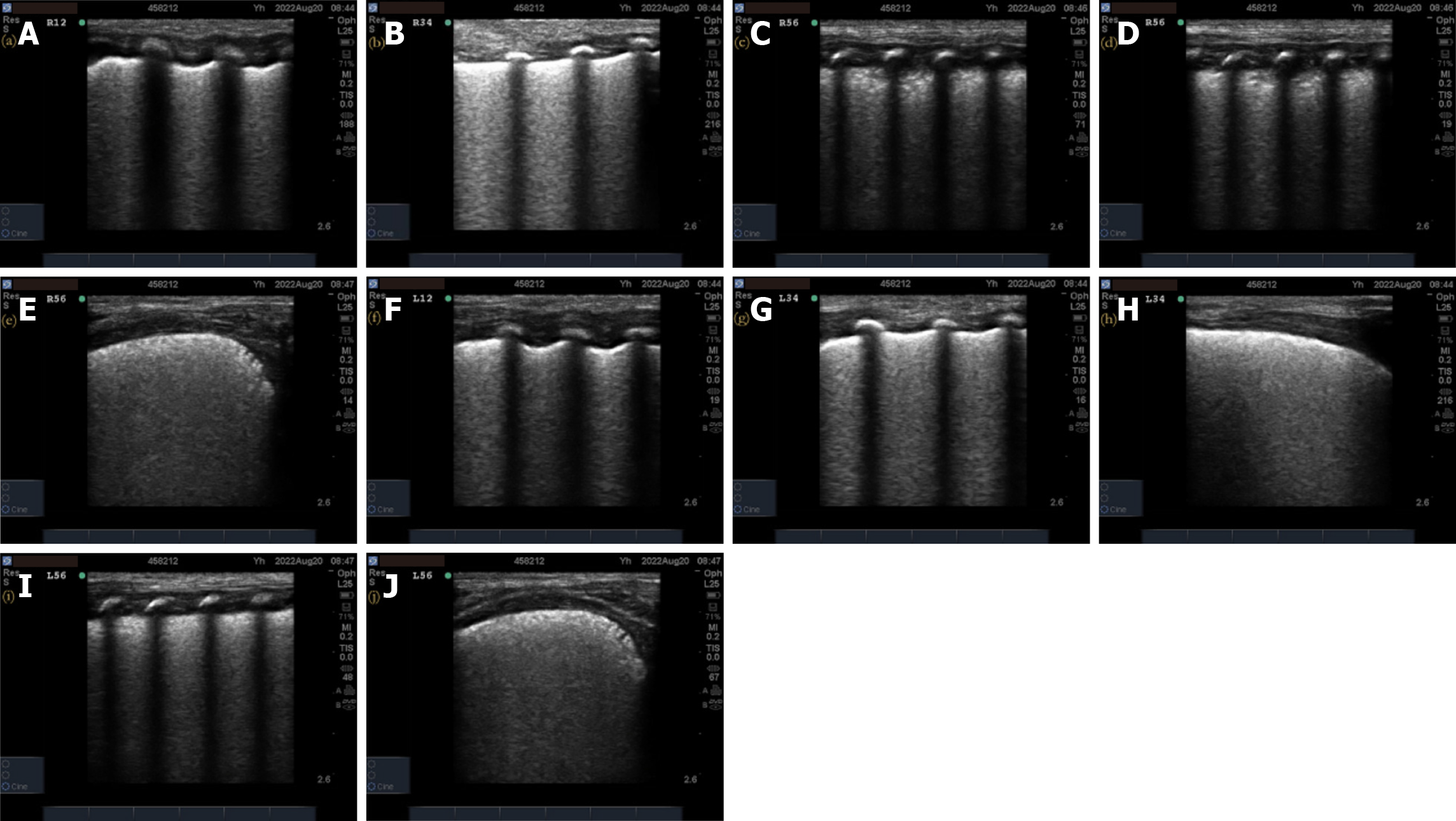Copyright
©The Author(s) 2024.
World J Clin Cases. Jul 16, 2024; 12(20): 4154-4165
Published online Jul 16, 2024. doi: 10.12998/wjcc.v12.i20.4154
Published online Jul 16, 2024. doi: 10.12998/wjcc.v12.i20.4154
Figure 3 X-ray grade 2 respiratory distress syndrome neonatal pulmonary ultrasonography images.
A, B, F–H: Representative images showing ground-glass-like changes in the R1–R4/L1–L4 region. Transverse scanning confirms continuous interruption of pleural lines with snowflake-like changes, similar to lung adenocarcinoma in situ, but in reality, they indicate early or mild lung consolidation changes, with 2 points for each region; C–E, I, J: Representative images showing the disappearance of pleural and A-lines in the R5–6/L5–6 region, with pulmonary consolidation accompanied by bronchial inflation sign. Transverse scan confirms that each area scores 6 points, and the total ultrasonography score is 20 points.
- Citation: Yang H, Gao LJ, Lei J, Li Q, Cui L, Li XH, Yin WX, Tian SH. Relationship between neonatal respiratory distress syndrome pulmonary ultrasonography and respiratory distress score, oxygenation index, and chest radiography grading. World J Clin Cases 2024; 12(20): 4154-4165
- URL: https://www.wjgnet.com/2307-8960/full/v12/i20/4154.htm
- DOI: https://dx.doi.org/10.12998/wjcc.v12.i20.4154









